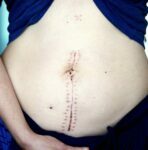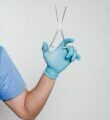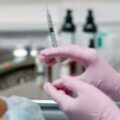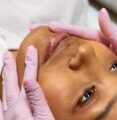On Dermablog, I’ve already written about how you can take care of a fresh wound, for example, after a mole removal. Once the wound has healed and the stitches have been removed, or the last of the scabs have fallen off, it’s time for a change in treatment. Read on to find out what you can do to take care of your scar in the best way possible.
What types of scars can form?
Our body tries to heal every wound as quickly as possible. It works fast. The price of this “repair” is an imperfect patch – a scar. Ideally, the wound heals completely and smoothly, and the scar looks like a shiny thread or spot. However, healing conditions and our genetics are not always ideal. When atrophic scarring leaves a depression in the skin, the body creates less “material” as it heals. Hypertrophic scars are pink, protrude above the surface of the skin, but do not extend beyond the original injury. They can occur anywhere on the body, often around joints. They usually heal over time. Keloid scars, which form most often on the chest, back, arms, shoulders and earlobes, are raised and extend well beyond the site of the injury. They can grow even in a few months after the injury.
How can you help the scar to heal as much as possible?
Immediately after the stitches are removed, massage the skin around the wound. Apply an oily cream to the area. This will loosen the scar and prevent it from wrinkling. Apply pressure to the scar itself. Pressure massage improves blood circulation and metabolism in the scar. Pressing your finger on the healed wound for about half a minute is best. Massage the entire length of the wound, but never from side to side. Today, you can buy various pressure pads and silicone patches that apply pressure to the scar over the course of the day for you.
What can you use to treat the scar?
Unsalted lard is great. The fat in it most closely resembles the lipids in our skin. Other great products are ointments containing vitamin E. Some oils also contain it, you can buy it as a separate concentrate. The theory is that it breaks down the fibers that are part of the scar tissue. Shea butter, calendula or hemp salve are also great. Recent products include silicone preparations, which are pleasant to use and protect the scar from drying out. Manufacturers also add the aforementioned vitamin E to these commercial products. Ultimately, it is up to you what product you choose. There is no best choice. The important thing is to treat the scar regularly (daily) and protect it from the sun for at least 3 months. During this time it is very sensitive and can be prone to pigmentation. Always protect it with an SPF 50 cream.
My advice outside the clinic
If you are bothered by a scar and want to improve its appearance, discuss your options with an experienced dermatologist or plastic surgeon. There is no over-the-counter product or at-home device that will change the texture of your skin and remove the scar for you. Improving the appearance of a scar is a multi-step process that takes time and patience. With regular massaging and lubrication, your scar can loosen and fade beautifully.
Please share your experiences with me and others :-). What has helped you most to improve the appearance of your scar? Have you had any treatments?





